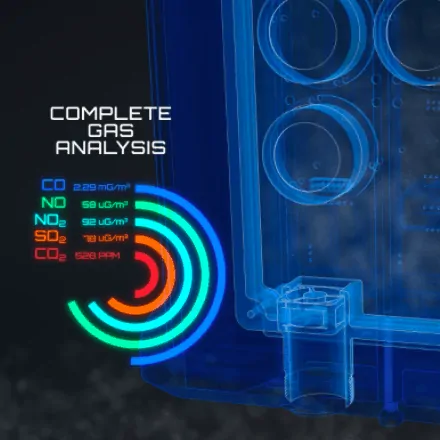Communication Modes in IoT for air quality monitoring

Communication Modes in IoT for air quality monitoring
Written By : Bhumik Nayak & Ayyan Karmakar
Published On March, 2022
Download Whitepaper
The air we breathe is an invisible resource, yet its quality significantly impacts our health and well-being. Traditionally, monitoring air quality involved manual processes, limiting data collection and hindering timely responses to pollution spikes. The Internet of Things (IoT) is transforming how we monitor air quality, making it smarter, faster, and more widespread.
The sensors, equipped with the power of IoT, transform into data-gathering machines, constantly monitoring pollutants like ozone, particulate matter, and nitrogen oxides. But how does the information travel from these tiny devices to a central hub where it can be analyzed and acted upon?
This is where communication protocols come into play. These protocols act as the language for these smart devices, enabling them to share their air quality measurements seamlessly. Choosing the right communication protocol is crucial for ensuring efficient and reliable data transmission tailored to the specific needs of an air quality monitoring system.
This white paper explores:
Various communication modes are leveraged in IoT-based air quality monitoring systems. It emphasizes that the optimal mode hinges on factors like data transfer range, power consumption, and network availability.
Core IoT concepts, highlighting its role in data collection and analysis. It then elaborates on the benefits of IoT technology in air quality monitoring, including real-time data acquisition, reduced manpower requirements, and wider spatial coverage.
Communication protocols employed in IoT air quality monitoring systems. It compares and contrasts prominent options, including LoRa, GSM/GPRS, LTE, NB-IoT, Sigfox, Modbus, and Ethernet.
LoRa: Offers long-range communication (up to 15 km in rural areas) and low power consumption, making it ideal for battery-powered devices.
GSM/GPRS: Provides global coverage and high data transfer rates, enabling continuous communication.
NB-IoT: Well-suited for applications requiring long battery life and low data transfer. It leverages existing cellular networks, eliminating the need for gateways.
WiFi: Enables high data rates and removes data size limitations.
Sigfox: Offers long-range, low-power communication but with a very limited payload capacity (12 bytes).
The paper concludes by emphasizing that there’s no one-size-fits-all solution. The most appropriate communication mode should be selected based on the specific requirements of the air quality monitoring application.




